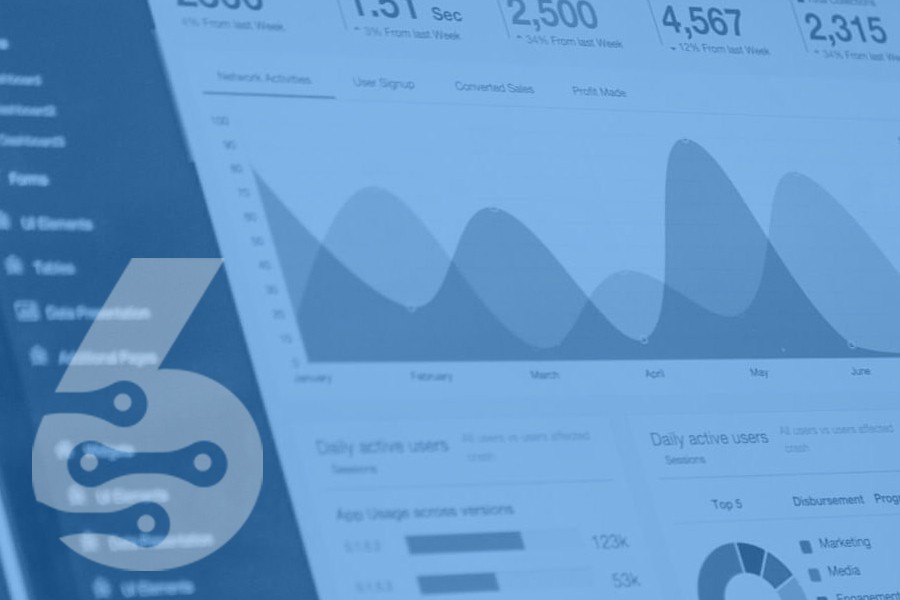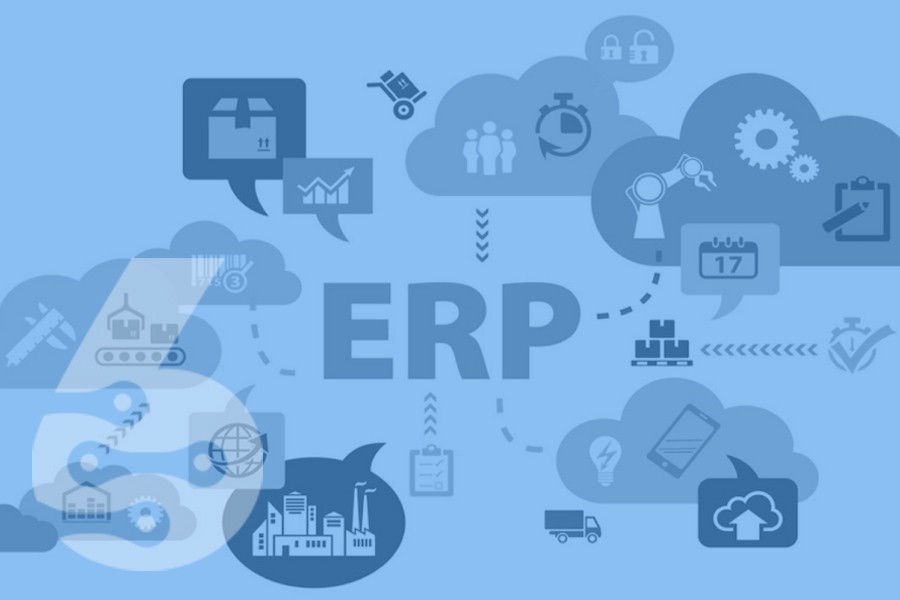- Data Management
- 21.12.2022
Data-Driven Decision-Making for Business Success
Guaranteed success based on data-driven decision making
Ben Talin
21.12.2022
“ If we have data, let’s look at data. If all we have are opinions, let’s go with mine… “
In the digital age, data is the key to success for any business. Companies must effectively use internal and external data sources to make informed decisions that will lead to improved performance. From ERP and CRM systems to industry experts like Gartner, MoreThanDigital Insights, and McKinsey, various data sources can help companies make better decisions. Let's dive into how businesses can leverage these resources to drive success.
What is Data-Driven Decision-Making?
In the business world, data-driven decision-making is a process that uses data to inform and guide business decisions. The goal is to use data to improve the accuracy of decisions and the organization's overall effectiveness. To do this, businesses first need to collect accurate data. This data can come from various sources, including customer surveys, financial reports, and website analytics. Once the data has been collected, it needs to be analyzed to identify trends and patterns. This analysis can be performed using various methods, including statistical analysis and data mining. Finally, the findings from the analysis need to be used to make decisions about how to improve the business. For example, if the data shows low customer satisfaction, the company may change its product or service offerings. Data-driven decision-making is essential for any business that wants to stay competitive in today's marketplace.
Advantages of Data-Driven Decision-Making
In today's business environment, data is more critical than ever. Decisions need to be made quickly and efficiently, and they need to be based on accurate information. Data-driven decision-making offers several advantages over traditional decision-making methods. With data-driven decision-making, decisions can be made faster and are more likely to be accurate. In addition, data-driven decision-making provides a foundation for improved customer service and experience. Making better decisions leads to enhanced strategic planning and increased confidence in decisions. Additionally, data-driven decision-making is more efficient, leading to improved allocation of resources. In today's business world, data-driven decision-making is the key to success.
Overview of Advantages (source: MoreThanDigital)
- Increased efficiency
- Faster decisions
- Improved accuracy
- Better decisions
- Improved customer service and experience
- Enhanced strategic planning
- More agility
- Increased confidence in decisions
- More efficient allocation of resources
SIX ERP – Where Every Click Moves Your Business Forward.
ERP & CRM Systems help to start
Enterprise resource planning (ERP) and customer relationship management (CRM) systems are great internal data sources. These systems provide a wealth of information about customers, products, sales processes, supply chain management, etc. This data can be used to inform strategic decisions regarding pricing strategies, product development timelines, marketing plans, inventory levels, and more. By leveraging this information in decision-making processes, companies can gain valuable insights into their operations, leading to greater efficiency and improved results.
Industry Experts & Services for external views
In addition to internal data sources such as ERP/CRM systems, businesses should utilize external services and providers as resources for informed decision-making. Industry experts like Gartner, MoreThanDigital Insights , and McKinsey provide valuable insights into market trends that businesses can use when setting objectives or strategizing new initiatives. Additionally, services such as competitor analysis reports offer invaluable information about competitors' strategies, which companies can use when creating their own plans for success.
Data Analysis& Visualization Tools help to decide
Data analysis tools have become increasingly popular among businesses because they can quickly process large amounts of data and create meaningful visualizations. Companies can use these visuals when formulating strategies or tracking progress on projects or initiatives over time. Additionally, they allow companies to quickly identify areas of improvement or opportunities for growth that would otherwise remain hidden within the data sets they are analyzing. By leveraging these tools effectively in their decision-making processes, businesses will have a much clearer picture of what their current performance looks like as well as what potential opportunities exist down the line.
How to Start with Data-Driven Decision-Making?
As anyone in business knows, making data-based decisions is essential for success. However, putting data-driven decision-making (DDDM) into practice can be challenging. Here are seven steps to getting started with DDDM (Source: MoreThanDigital):
- Set clear goals and objectives. What do you want to achieve with DDDM? Without clear goals, knowing which data to collect and how to use it effectively won't be easy.
- Acquire the correct data. Not all data is created equal. Ensure you collect the proper data to help you achieve your DDDM goals.
- Prepare and clean the data. Once you have the data, it's essential to prepare it correctly for analysis. This may involve cleaning up errors, organizing the data into manageable files, and more.
- Perform data analysis. This is where you will use statistical methods and other tools to examine the data and look for trends and insights.
- Share the insights. Once you've generated valuable insights from the data, it's time to share them with decision-makers. This step is critical for putting DDDM into practice.
- Make decisions. Using the insights from your data analysis, it's time to make some decisions! Be sure to consider all of the available information before making any final choices.
- Monitor and adjust. Finally, don't forget to monitor the results of your decisions and make adjustments as needed. DDDM is an iterative process, so be prepared to review and update your approach as required constantly.
Creating a Data-Driven Company Culture
A data-driven culture empowers employees to use data to make decisions and create value for the company. Leaders need to be prepared and enabled to communicate the vision and strategy for a data-driven culture. Training of employees should be conducted so they understand how to use data effectively. Furthermore, companies need to find and empower internal data advocates that help drive data utilization. Data should be integrated everywhere so it becomes "normal". The infrastructure and processes need to be ready to support a data-driven culture change. A data-driven culture creates an environment where everyone uses data to improve decision-making and create value for the company. Implementing a data-driven culture can be challenging, but the benefits are great. When done correctly, a data-driven culture will lead to happier employees and a more successful company.
Conclusion
Data-driven decision-making is essential for any business looking to succeed in today's digital economy. From leveraging internal sources such as ERP/CRM systems to utilizing external services from industry experts like Gartner or McKinsey, a variety of resources are available that provide valuable insights into the market which can help inform better decisions for improved overall performance. By taking advantage of these resources and utilizing them effectively with data analysis and visualization tools - companies will have the tools required to drive success in today's competitive landscape!
About the author
"Ben" is an international, renowned expert in the field of digitalization, change management, and innovation. He founded his first company at 13, and many more have followed. His passion is changing the status quo with technology and innovation. His experience ranges from marketing, change management, and digital product and strategy development to platforms and complex ecosystems. Since 2017, Benjamin Talin is also founder and CEO of MoreThanDigital, which has become one of the world's leading platforms for digitalization, innovation, and future topics.
Related articles

Bulgaria Is Moving to the Euro on 1 January 2026. Are Your Systems Ready?
Recent assessments by the European Commission, the ECB, and the European Parliament confirm that Bulgaria meets the convergence criteria and is on track to become the 21st euro area member.For...
5 Tips for Managing Risk During an ERP Implementation
Like most business owners, you're probably excited about the prospects of implementing a new ERP system. However, ERP implementations can be complex and risky, so taking steps to manage risk...



